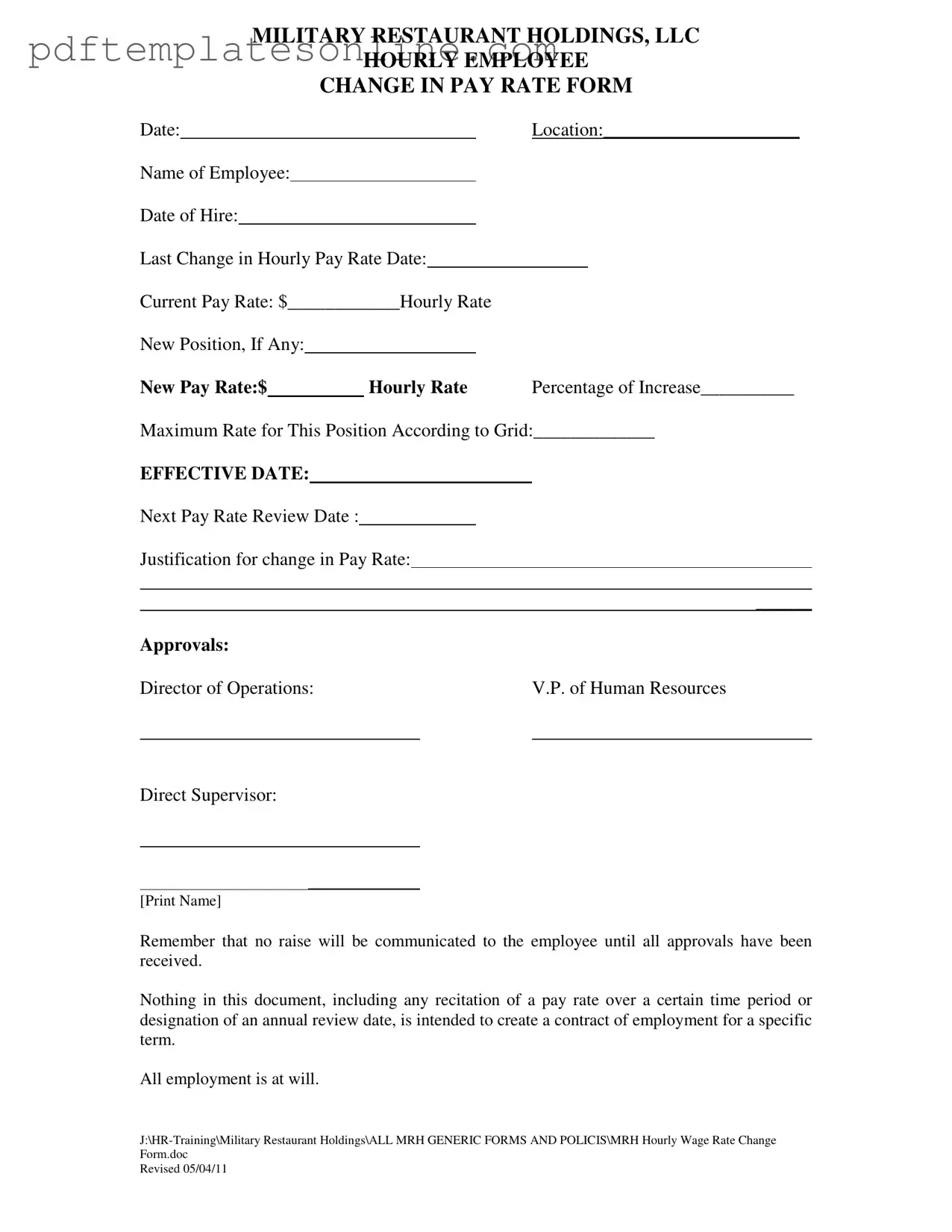Filling out the Change Pay Rate form can seem straightforward, but mistakes are common. One frequent error is failing to include the employee's name clearly. Without a proper name, the form cannot be processed, leading to unnecessary delays in pay adjustments.
Another mistake involves omitting the effective date of the pay change. This date is crucial as it determines when the new rate will take effect. If this information is missing, it can lead to confusion and incorrect payroll calculations.
Many people also neglect to specify the new position if there has been a change. If the employee is moving to a different role, this should be clearly indicated. Not doing so can create issues with job classifications and associated pay rates.
It is essential to accurately fill in the current pay rate and the new pay rate. Errors in these figures can lead to significant discrepancies in payroll. Double-checking these numbers before submission can prevent financial complications for both the employee and the organization.
Another common oversight is the failure to provide a clear justification for the pay change. This section is vital as it outlines the reasons for the adjustment. Without a solid justification, the approval process may be stalled or rejected.
People often forget to obtain all necessary approvals before submitting the form. The signatures of the Director of Operations, V.P. of Human Resources, and the direct supervisor are essential. Missing any of these can result in the form being returned for corrections.
It is also important to consider the percentage of increase when filling out the form. This figure should accurately reflect the change in pay. If this percentage is not calculated correctly, it can lead to misunderstandings regarding the raise.
Some individuals may overlook the maximum rate for the position according to the grid. This information is crucial for ensuring that the new pay rate aligns with company policies. Ignoring this can lead to pay rates that exceed what is permissible.
Finally, not keeping a copy of the completed form can be detrimental. Retaining a copy ensures that there is a record of the changes made, which can be useful for future reference or in case of disputes. Each of these mistakes can complicate the process and affect employee satisfaction. Being thorough and attentive can make a significant difference.
